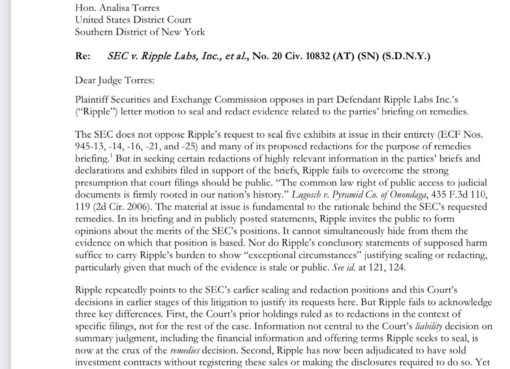The ION network uses Bitcoin Layer 2 solution to verify digital identities in a decentralized manner without relying on any third-party control. The ION nodes can process 10,000 ID requests in a single transaction.
On Thursday, March 25, tech giant Microsoft Corp (NASDAQ: MSFT) announced the completion of its Digital Identity Network ION V1. As per the company, ION is a Decentralized Identifier (DID) technology, a framework that authenticates online identities. Similar to the Lightning Network, Microsoft’s ION is the Layer 2 technology launched on the Bitcoin network.
However, instead of focusing on payments, it users the Bitcoin blockchain to focus on verifying digital identities in a decentralized manner. Thus, there’s no control of a third identity since usernames and passwords aren’t stored on any servers. The official documentation of DID’s states:
“DIDs are identifiers that can be used to secure access to resources, sign and verify credentials, and facilitate application data exchange. Unlike traditional usernames and email addresses, DIDs are owned and controlled by the entity itself (be it a person, device, or company), and exist independently of any external organization or trusted intermediary. Without DIDs, you can’t have a vibrant, interoperable decentralized identity and application ecosystem”.
As a result, DID’s help users get rid of passwords, emails, and cell phones for verification. Microsoft’s Daniel Buchner shared about the ION implementation at the company. Currently, the tech giant has deployed the ION node for its production infrastructure. Besides, Microsoft is also working with other companies helping them to do it.
ION does not rely on centralized entities, trusted validators or special protocol tokens. ION answers to no one but you, the community,” he added.
Microsoft’s ION Is Open-Source
The Microsoft executive Buchner said that ION is completely open-source. As result, anyone can download the code to run the ION node as well as use the service. Besides, it also uses Sidetree, another open-source protocol for decentralized identifiers. Sidetree has been developed by developers from Consensys, Microsoft, Mattr, and Transmute.
To sign off an identity, the ION open-source software uses the same logic as Bitcoin’s transaction layers. to verify whether if the user owns an ID, ION makes use of a public key along with its associated private key.
Thus for logging into any platform that uses ION, users first need to verify their accounts by “signing” their DIDs with their ION account. It does this by forming cryptographic links to the Bitcoin network. The ION network basically verifies the service provider that users own along with the ID associated with their account.
Bitcoin’s blockchain uses the InterPlanetary File System (IPFS) protocol to store any personal data tied to the ID, off-chain. In a single transaction, the ION nodes can process around 10,000 ID requests.
Bhushan is a FinTech enthusiast and holds a good flair in understanding financial markets. His interest in economics and finance draw his attention towards the new emerging Blockchain Technology and Cryptocurrency markets. He is continuously in a learning process and keeps himself motivated by sharing his acquired knowledge. In free time he reads thriller fictions novels and sometimes explore his culinary skills.




